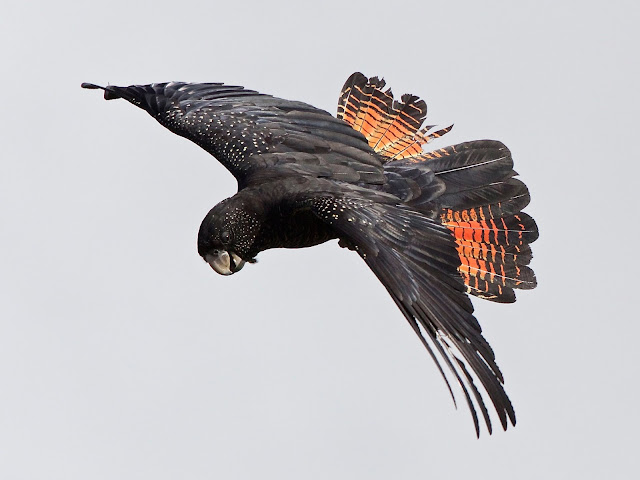We are now based at Rockhampton
just north of the special latitude known as the Tropic of Capricorn.
The Tropic of
Capricorn’s latitude is about 23° 26' south
of the Equator.
The Tropic of Capricorn is the
southernmost latitude where the sun can be directly overhead and is the dividing line between the
Southern Temperate Zone to the south and the tropics to the north. (copied from Wikipedia and modified by
Avithera)
At this latitude we should start
seeing more tropical bird species though of course the natural world does not change
because of a line on a map. So while the line has an astronomical basis we recognise
this latitude as a divide between two different worlds, the southern temperate
zone and the tropics.
On Tuesday the 16th of
July we made a day trip from Rockhampton out to Yeppoon on the coast. There were
two birding highlights for the day.
As if to affirm we are now north
of the Tropic of Capricorn we found our first Magpie Geese for the trip. A
large number - at least 600, were on a wetland come farm storage dam with water
lilies beside the road not far north of Yeppoon on the road to Byfield. While
Magpie Geese can be found further south, to my mind they are a typical top end
tropical species. Also on the dam were Comb-crested Jacana, another tropical
species that specialises in walking on water lilies, again our first for this
trip. Also seen were Glossy Ibis, Intermediate Egrets (at least 40) Cotton
Pygmy-geese, a range of duck species and other typical wetland birds.
 |
| A section of the wetland with some of the Magpie Geese and Intermediate Egrets. |
The second highlight was a small
flock of about 20 to 30 Red-tailed Black-Cockatoos. I say small because I have
seen this species in very large flocks of 300 to 400 birds in the past. This
group was on the coast just south of Rosslyn Bay, the port used to access the
Keppel Islands and the Great Barrier Reef further off shore.
The Red-tails gave me a chance to
take a number of photos as members of the group fed, groomed and generally
cavorted about in a fresh on-shore breeze. There were opportunities for flight
shots as both males and females in small groups of two and three enjoyed some
flight acrobatics in the breeze. As they came in to land on slender twigs at
the top of a casuarina they spread their wings and tails, revealing bright
intense red tails for the males and yellow barred tails for the females and juveniles.
 |
This is either a female or a juvenile bird. Note the seed pods on the left side of photo.
| This is what the Red-tails were feeding on. |
|
| | | | | |
|
 |
| These three birds were resting and quietly grooming. I guess they were trying to ignore the antics of the acrobats in the group - see later photos. |
 |
| High on slender stems at the top of a Casuarina, the female on the left has successfully landed and two males are trying to land on the same stem to the right. |
 |
| This female has made a successful landing. |
 |
| Wow, this is fun! The boys seemed to be chasing the girls and not doing as well - nothing new there. |
 |
| Settled birds not part of the action had to watch their backs as others gamboled about recklessly. |
 |
| Staying upright on slender stems waving in the breeze is not easy. |
 |
| Most of the birds had tatty feathers - did they need to moult new ones or just settle down and do some grooming? |
 |
| Coming in to land. |
 |
| This male has misjudged his landing, requiring a rather inelegant recovery. |
 |
| There were many near collisions. |
Today's highlights again showed that when traveling, special bird experiences are not hard to find.












G'day J&P,
ReplyDeleteSome glorious shots there, tatty feathers not-withstanding. The RTBCockies look as acrobatic, (clown like?), as our Galahs can sometimes be.
Regards,
PW
Thanks for the comment Gouldiae. Interesting comparison with Galahs. I thought of Galahs while photographing the Red-tails which have similar clown like antics and they were clearly enjoying the game as Galahs do. The Red-tails were immediately above the beach and the brisk onshore breeze was flowing up the sharp rise causing uplift which the cockies were using to have fun with a minimum of effort because they hardly had to flap their wings as they wheeled about.
DeleteCheers
Avithera
Great shots of the Cockatoos.
ReplyDelete